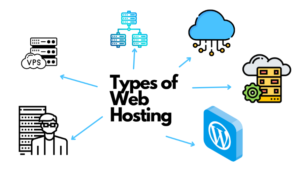
Hey, fellow digital enthusiasts! Today, let’s dive into the wild world of Google’s crawl budget. I stumbled upon an intriguing question on the SEO subreddit that got me thinking. Our SEO comrade raised concerns about a potential crawl budget issue tied to a mix of 301 redirects and 410 error responses. Well, fear not, because Google’s own John Mueller rode in like a knight in shining armor to offer some clarity. So, grab your SEO hats, folks; we’re about to untangle this web!
Table of Contents
Cracking the Crawl Budget Code
You know, it’s a common belief in the SEO realm that Google dishes out crawl budgets like candy on Halloween. We think every site has its own cap on how many times Google’s bots will grace it with their presence. But hold your horses! Google’s been slyly denying the existence of a concrete crawl budget for ages, despite our suspicions.
Back in 2010, the mighty Matt Cutts, a Google engineer of the time, spilled the beans in an interview. He made it clear – there’s no such thing as an indexation cap, and there’s definitely no hard limit on Google’s crawl. Fast forward to 2017, and Google dropped a crawl budget explainer. It’s like they’re trying to demystify the magic trick we’ve all been oohing and aahing at. Sneaky, huh?
The Nitty-Gritty of Crawl Budget
Let’s break down the crawl budget basics, shall we?
Crawl Rate: It’s the number of URLs Google can cram into its crawly schedule. The server’s ability to supply those URLs is the boss here.
Server Shenanigans: If you’re on a shared server, your URLs are competing for Google’s attention with thousands – maybe millions – of others. It’s like a crowded party, and Google’s just trying to squeeze in.
Lightweight Pages Rule: Google loves pages on a diet. Lightweight pages are easier for the bots to devour. It’s like serving a quick snack instead of a five-course meal – efficient and satisfying.
Duplicate Page Drama: Pages that are photocopies of each other or low-value snoozers waste server resources. Google’s not into hoarding duplicates; it wants the unique stuff.
404 Softball: Soft 404 pages are curveballs for Google. They distract the bots from the MVPs – the pages that truly matter.
Link Magic: Inbound and internal link patterns pull the strings. They whisper to Google, guiding the bots towards the pages that deserve the spotlight.
Reddit’s Cry for Help: The Crawl Rate Conundrum
Now, onto our Reddit friend’s dilemma. They’re wrestling with ancient non-HTTPS URLs that won’t leave Google’s radar. A valiant effort – a 301 redirect from HTTP to HTTPS followed by a 410 error response – was their strategy. But, oh, the uncertainty!
“I’m suffering ‘crawl budget’ issues, and I do not know if this two responses are exhausting Googlebot. Is the 410 effective? I mean, should I return the 410 directly, without a first 301?”
Our hero, John Mueller, stepped in with some golden nuggets of wisdom:
“301’s are fine, a 301/410 mix is fine. Crawl budget is really just a problem for massive sites.”
Okay, pause right there. If you’re not running the SEO version of Disneyland, relax! Mueller’s hinting that Google might not be avoiding your site due to a technical glitch but rather because they’re just not that into it. Ouch!
Why Google Might Swipe Left on Your Pages
Mueller’s ‘probably’ got us thinking. Why isn’t Google swooning over our webpages? Well, it turns out, some SEO tactics might be playing hard to get.
Copycat Chronicles: Imagine this – you’re at a party, and everyone’s copying the cool kid’s moves. That’s what happens when we mimic top-ranked pages without adding our own flair. It’s like being stuck in a loop of déjà vu – not very appealing to Google.
Originality is Sexy: Google craves uniqueness. If you’re not bringing something new to the table, you’re just another face in the crowd. Think of it as a choice between being a groundbreaking ‘One’ or a mundane ‘Zero’ in the search results.
The Technical Tango: Server Health and Beyond
Sure, technical hiccups can mess with your crawl rate, like a DJ with a scratched record. Server health, page speed, and other factors can throw a wrench in the party. But when it comes to crawl budget, Google’s reserved that VIP section for the big shots – the massive sites.
In a nutshell, my friends, understanding Google’s mysterious crawl budget is like deciphering an ancient map. It requires a mix of SEO wisdom, a dash of tech-savviness, and a sprinkle of originality. So, keep those URLs trim, serve Google a delightful variety, and who knows, your site might just be the next big thing on Google’s dance floor!
In the ever-evolving world of SEO, remember, it’s not always about the quantity of crawls but the quality of your digital dance moves. Keep rocking, SEO warriors!





